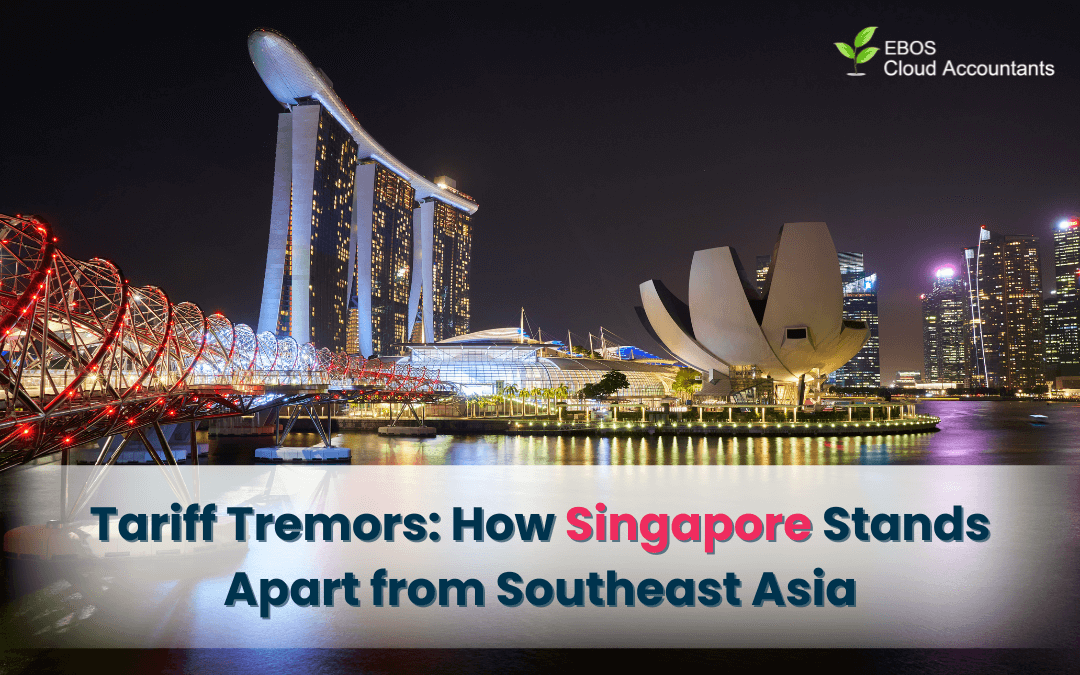As President Donald Trump’s sweeping tariff policy prepares to take effect in April 2025, global markets are bracing for impact. With new import duties starting at 10% and scaling up to nearly 50% for certain economies, the move is being labeled as the next major escalation in the global trade war. While much of Southeast Asia finds itself on the defensive, Singapore appears to be charting a unique, more resilient path.
The Tariff Shockwave
Under Trump’s proposed “reciprocal tariff system,” countries that run large trade surpluses with the United States will face proportionally higher tariffs. The formula is simple: the higher a country’s trade surplus with the U.S., the steeper the tariff.
This means countries like China (34%), the European Union (20%), and Vietnam, Laos, and Cambodia (46%–49%) are among the hardest hit. These nations, especially in Southeast Asia, rely heavily on exports of electronics, textiles, and consumer goods to the American market.
By contrast, Singapore’s tariff rate has not been formally set, and for good reason. Singapore does not run a significant trade surplus with the U.S., and its economy is fundamentally different from many of its regional peers.
Why Singapore Stands Apart
1. A Trade Hub, Not a Factory
Unlike Vietnam or Cambodia, Singapore is not a mass exporter of low-cost manufactured goods. Instead, it serves as a high-value logistics, finance, and re-export hub. Its role as an intermediary rather than a primary producer shields it from direct tariff exposure.
2. Strong U.S. Relations
Singapore enjoys strong diplomatic and economic ties with the United States, including robust military cooperation and a long-standing free trade agreement (FTA) signed in 2004. This agreement provides a framework that may protect Singaporean businesses from the most punitive tariff measures.
3. Diversified Economy and Financial Strength
Singapore’s economy is service-oriented, technologically advanced, and supported by world-class infrastructure. It is less dependent on any single export sector, and its strong financial system provides resilience in times of global economic turbulence.
Southeast Asia’s Struggle
In contrast, countries like Vietnam, Laos, and Cambodia are facing an uphill battle. These economies are deeply reliant on U.S. demand for low-cost goods. With new tariffs approaching 50%, manufacturers may be forced to relocate—or pass costs to consumers, hurting competitiveness.
This pressure could trigger a regional supply chain shuffle, as companies seek more stable or tariff-free environments for production and trade.
A Window of Opportunity
While the situation is volatile, Singapore could benefit from this disruption. As companies look to diversify away from high-tariff zones, Singapore’s political stability, infrastructure, and neutrality make it an attractive option for regional headquarters, distribution centers, or financial hubs.
Additionally, Malaysia, with similarly moderate exposure, is poised to attract manufacturing shifts. However, Singapore’s edge lies in its connectivity and legal framework, which continue to draw multinational corporations.
Conclusion: Calm in the Storm
Singapore may not be entirely immune to the fallout—especially if regional trade volumes shrink—but it is far better positioned than its Southeast Asian neighbors. While others scramble to adjust, Singapore’s strategic foresight, diversified economy, and global trust could allow it not only to weather the tariff tremors—but to grow stronger because of them.
Enjoyed this article? Curious to learn more about incorporation? Click here for more insights!







